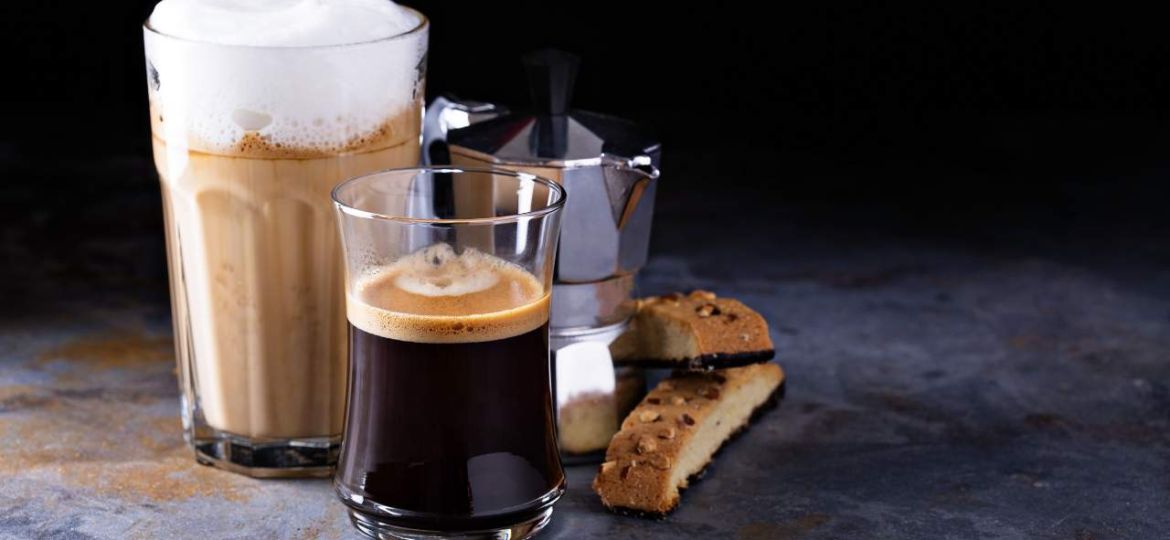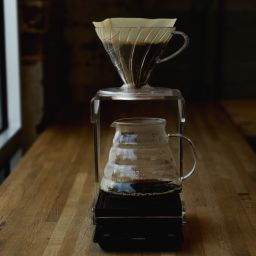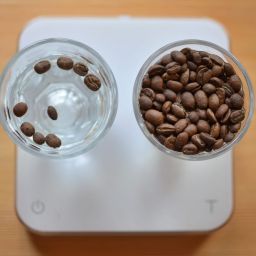
Viennese coffee is not just a drink; it’s a testament to Vienna’s rich coffee heritage, distinguished by its unique preparation and serving style. Central to its identity is the use of high-quality, medium-roasted coffee beans, often a blend of Arabica and Robusta, which strike a balance between strength and aroma. Unlike the more common espresso-based drinks, Viennese coffee is traditionally prepared with a method resembling drip or pour-over, resulting in a brew that’s less intense but more nuanced in flavor.
Key Varieties of Viennese Coffee
Viennese coffee comes in an array of styles, each with its unique character and history. Understanding these varieties is key to appreciating the depth of Vienna’s coffee culture. Here are some of the most iconic types:
- Melange: Often compared to the cappuccino, the Melange is a staple in Viennese coffee houses. It’s made with one part espresso and one part steamed milk, topped with a layer of milk foam. The balance between the espresso and milk creates a smooth, creamy texture, making it a favorite among locals and tourists alike.
- Einspänner: A true emblem of Viennese coffee culture, the Einspänner is a strong, black coffee served in a glass with a handle. It’s known for its thick layer of whipped cream on top, which you are meant to stir in before sipping. The contrast between the strong coffee and the sweet cream is a delightful experience.
- Wiener Kaffee: This is a more straightforward preparation, essentially a black coffee often compared to the Americano. It’s typically served with a small amount of cream on the side, allowing drinkers to adjust the richness to their taste.
- Kapuziner: This is Viennese coffee’s answer to the espresso macchiato, featuring a shot of espresso with a small amount of cream. It’s named for its color resembling the robes of Capuchin monks.
- Verlängerter: A popular choice for those who prefer a milder flavor, the Verlängerter is made with espresso diluted with hot water, similar to an Americano, but with a distinctively smoother Vienna roast profile.
Each of these varieties offers a unique glimpse into the Viennese coffee tradition. While they share similarities with other European coffee styles, such as the Italian espresso or the French café au lait, Viennese coffee maintains its distinct identity through its preparation, presentation, and the cultural context in which it is enjoyed.
Want to learn about how to make make Coffee Creamer? Check out our post.
Preparation Methods
The preparation of Viennese coffee is an art form, deeply rooted in tradition and precision. While the methods may vary depending on the type of coffee, there are some common techniques and nuances that define Viennese coffee preparation.
The Coffee Base: The foundation of all Viennese coffee varieties is a well-prepared coffee base. Unlike the Italian preference for espresso, Viennese coffee typically starts with a milder base, often prepared using a method akin to drip coffee. This method emphasizes the nuanced flavors of the Vienna roast—a medium roast that strikes a perfect balance between the bean’s inherent flavors and the roast character.
Melange Preparation: To prepare a Melange, the barista starts with a shot of espresso. Then, equal parts of steamed milk and foam are added. The key is to achieve a harmonious blend of the espresso’s richness with the milk’s creaminess, resulting in a smooth and velvety cup.
Einspänner Technique: The Einspänner starts with a strong, black coffee, often a double espresso. The coffee is then poured into a glass, and a generous dollop of whipped cream is added on top. The cream should be fresh and stiffly whipped, sitting atop the coffee like a cloud. The contrast in temperatures and textures is central to the Einspänner experience.
Wiener Kaffee and Kapuziner: For a Wiener Kaffee, the process is straightforward—a black coffee served with or without a little cream. The Kapuziner, meanwhile, adds a touch of cream to an espresso shot, creating a beverage that’s stronger than a Melange but milder than a straight espresso.
Verlängerter Method: The Verlängerter is made by diluting an espresso shot with hot water. The ratio of water to espresso is key here, as it should result in a coffee that is strong but not overpowering, allowing the Vienna roast’s characteristics to shine through.
Water Quality: An often-overlooked aspect of coffee preparation is water quality. In Vienna, the excellent tap water, known for its purity and taste, plays a crucial role in the coffee’s final flavor profile.
Serving Traditions: Finally, the way Viennese coffee is served is as important as its preparation. Each variety is typically served on a silver tray, accompanied by a glass of water and sometimes a small chocolate or cookie, emphasizing the ritualistic and indulgent nature of Viennese coffee culture.
Understanding these preparation methods reveals the meticulous care and cultural reverence embedded in Viennese coffee. It’s a blend of culinary precision, artistic expression, and historical tradition, making each cup a tribute to Vienna’s rich coffee heritage.
The Art of Serving Viennese Coffee
The presentation of Viennese coffee is a ritual that enhances its enjoyment, reflecting a deep respect for the beverage and its cultural significance. This art of serving is as integral to the experience as the coffee itself.
Elegance in Presentation: Viennese coffee is typically served in traditional porcelain cups, often ornate and sometimes specific to the type of coffee. This elegant presentation is complemented by a silver or metal tray, a glass of water, and occasionally a small biscuit or chocolate on the side. The water is not merely a drink but a palate cleanser to fully appreciate the coffee’s flavor.
Accompaniments: The experience of Viennese coffee is often accompanied by traditional Austrian pastries, such as Sachertorte (a rich chocolate cake), Apfelstrudel (apple strudel), or a variety of local delicacies. These pairings are not random; they are carefully selected to complement the coffee’s flavor profile.
Atmosphere and Setting: The setting in which Viennese coffee is served is crucial. The coffee houses of Vienna are renowned for their warm, inviting atmospheres, with comfortable seating, quiet corners for reading or conversation, and often live classical music. The décor is typically traditional, with wooden paneling, chandeliers, and historical artworks, creating a sense of stepping back in time.
Social Experience: Enjoying Viennese coffee is as much a social experience as it is a culinary one. It’s common to see individuals deeply engrossed in books or newspapers, groups engaging in animated discussions, or people simply watching the world go by. The coffee house serves as a communal living room, a place for relaxation and social interaction.
Service with Tradition: The service in Viennese coffee houses is often formal, with waiters in traditional attire, offering attentive yet unobtrusive service. This level of service adds to the overall experience, making patrons feel valued and respected.
The art of serving Viennese coffee, therefore, is a comprehensive experience. It’s about creating an environment where the coffee is not just consumed, but savored, and where the act of drinking coffee becomes a moment to pause and enjoy life.
Tasting Profile: Understanding the Flavors
Viennese coffee’s flavor profile is as rich and varied as its history. Understanding these flavors not only enhances the enjoyment of the coffee but also offers insight into Vienna’s coffee culture.
Complexity and Balance: Viennese coffee is celebrated for its balance and complexity. The medium roast typically used allows the natural flavors of the coffee beans to shine through, without the bitterness often associated with darker roasts. This results in a coffee that is rich yet smooth, with a subtle complexity in its flavor profile.
Melange: When tasting a Melange, expect a harmonious blend of robust coffee and creamy milk. It’s smooth, with the milk softening the espresso’s intensity, creating a well-rounded flavor. There might be hints of caramel or chocolate, depending on the beans used.
Einspänner: The Einspänner offers a stark contrast between the strong, bold flavor of the coffee and the sweet, creamy whipped cream. The initial taste is potent and invigorating, followed by the richness of the cream that balances the cup.
Wiener Kaffee and Kapuziner: The Wiener Kaffee presents a straightforward, clean coffee flavor, often with a slight nuttiness or a hint of spice, characteristic of Vienna roasts. The Kapuziner, with its touch of cream, adds a slight richness to the coffee, softening its strong espresso base.
Verlängerter: For those who prefer a milder coffee, the Verlängerter offers a diluted espresso flavor that is easy on the palate but still maintains the coffee’s essential characteristics.
Aroma: The aroma of Viennese coffee is as important as its taste. It’s often described as rich and inviting, with a warm, comforting scent that prepares the senses for the coffee’s flavor.
Understanding these flavors is key to appreciating Viennese coffee. Each variety offers a different experience, a journey through taste that reflects the diversity and richness of Vienna’s coffee culture.
Making Viennese Coffee at Home
For coffee enthusiasts eager to recreate the magic of Viennese coffee at home, here are some tips and recommendations to help you craft an authentic experience.
Selecting the Right Beans: Start with high-quality, medium-roasted beans. Look for blends that offer a balance of Arabica and Robusta varieties, which provide the right mix of flavor and body. Vienna roast beans, if available, are ideal for an authentic taste.
Brewing Technique: While traditional Viennese coffee houses might use specific brewing methods, a standard drip coffee maker or a pour-over setup can work well at home. Aim for a brew that’s less intense than espresso but more flavorful than standard American coffee.
Preparing the Varieties: For a Melange, use equal parts of coffee, steamed milk, and foam. If you don’t have a milk steamer, warm the milk gently on the stove and whisk to create foam. For an Einspänner, top your strong black coffee with whipped cream. Remember, the contrast between the hot coffee and cold cream is key.
Serving Style: Serve in a traditional coffee cup, and don’t forget the glass of water on the side. While the ambiance of a Viennese coffee house might be challenging to replicate, creating a quiet and comfortable space can enhance your enjoyment.
Pairing with Pastries: If you’re inclined, pair your coffee with a slice of Sachertorte or Apfelstrudel to complete the Viennese experience.
With these tips, you can bring a taste of Vienna into your home and savor the unique charm of Viennese coffee in your everyday life.
Conclusion
Viennese coffee is more than just a beverage; it’s a symbol of Vienna’s rich cultural heritage, a testament to the city’s love affair with coffee. From the elegant Melange to the robust Einspänner, each variety tells a story of tradition, artistry, and social customs. Understanding and appreciating the nuances of Viennese coffee opens up a world of sensory delight and cultural discovery. Whether you’re savoring it in a historic Viennese café or brewing it in the comfort of your home, each cup invites you to partake in a centuries-old tradition that continues to captivate coffee aficionados around the world.









